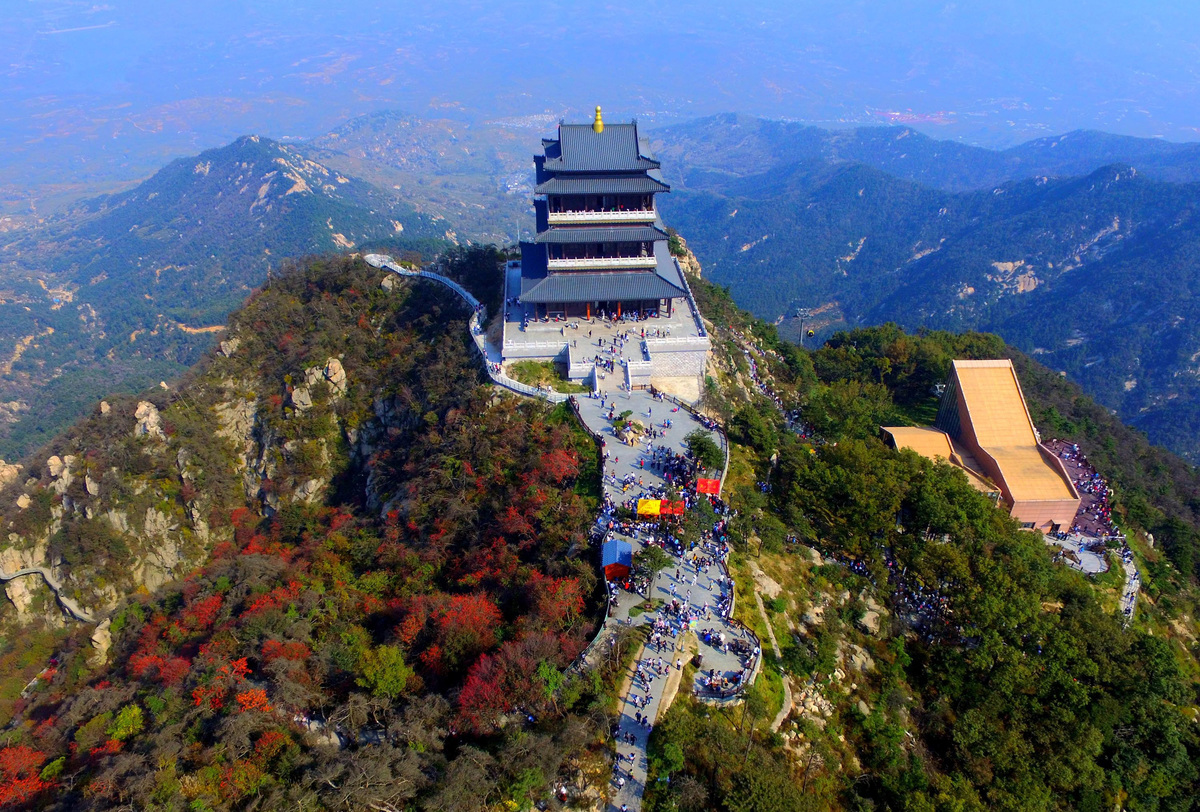Latest geoparks will highlight conservation
By Zhao Ruixue in Jinan and Zhu Lixin in Hefei | China Daily | Updated: 2019-04-19 09:31

Two Chinese sites added recently to the UNESCO Global Geopark List will feature conservation with sustainable development.
Yimeng Mountain in Shandong province and Jiuhua Mountain in Anhui province have been put on the UNESCO Global Geopark List, according to UNESCO's website on Wednesday, bringing the number of Chinese sites on the list to 39.
UNESCO Global Geoparks are single, unified geographical areas at which sites and landscapes of international geological significance are managed with a holistic concept of protection, education and sustainable development. Their bottom-up approach of combining conservation with sustainable development, while involving local communities, is becoming increasingly popular.
At present, there are 147 UNESCO Global Geoparks in 41 countries.
"The plans for Jiuhua Mountain have been included in the overall plan for the natural protection and social and economic development of Chizhou city, which administers the mountains. In addition, we have organized a team to protect geological relics," said Zhang Yinhu of the Jiuhua Mountain Geological Park Office.
Jiuhua Mountain - translated as "nine glorious mountains" - boasts 57 geological relics and 71 mountains. It is home to sacred Buddhist temples.
Beyond the religious, historical and cultural significance, the mountains also provide a major source of water, which feeds the Yangtze River system, according to the UNESCO website.
The Jiuhua Mountain area gets around 8.5 million tourists a year. The area has provided jobs for over 15,000 people, becoming a major economic contributor to local communities.
The development outlines for Yimeng Mountain show that the site will focus on protecting geological relics, the natural environment and historic landscapes over the next 10 years.
Covering an area of 1,804 square kilometers, the Yimeng Mountain Geopark site in Linyi is home to one of Asia's largest kimberlite diamond mines, where the first primary diamonds were discovered in China. The landscape is dotted with castle-like land formations, as well as multiple cultural heritage sites, including the Xialou Pavilion, which Confucius is believed to have visited; the 1,500-year-old Marshal Tree; and the Menglianggu Battle Monument.
"The geological park will be divided into areas for tourist services, sightseeing, geological relics protection, natural ecology, science education and native living communities," said Wang Mingkui of the Yimeng Mountain management committee.
The geological park will definitely play an important role in promoting local economic development and cultural revitalization, Wang said.
























